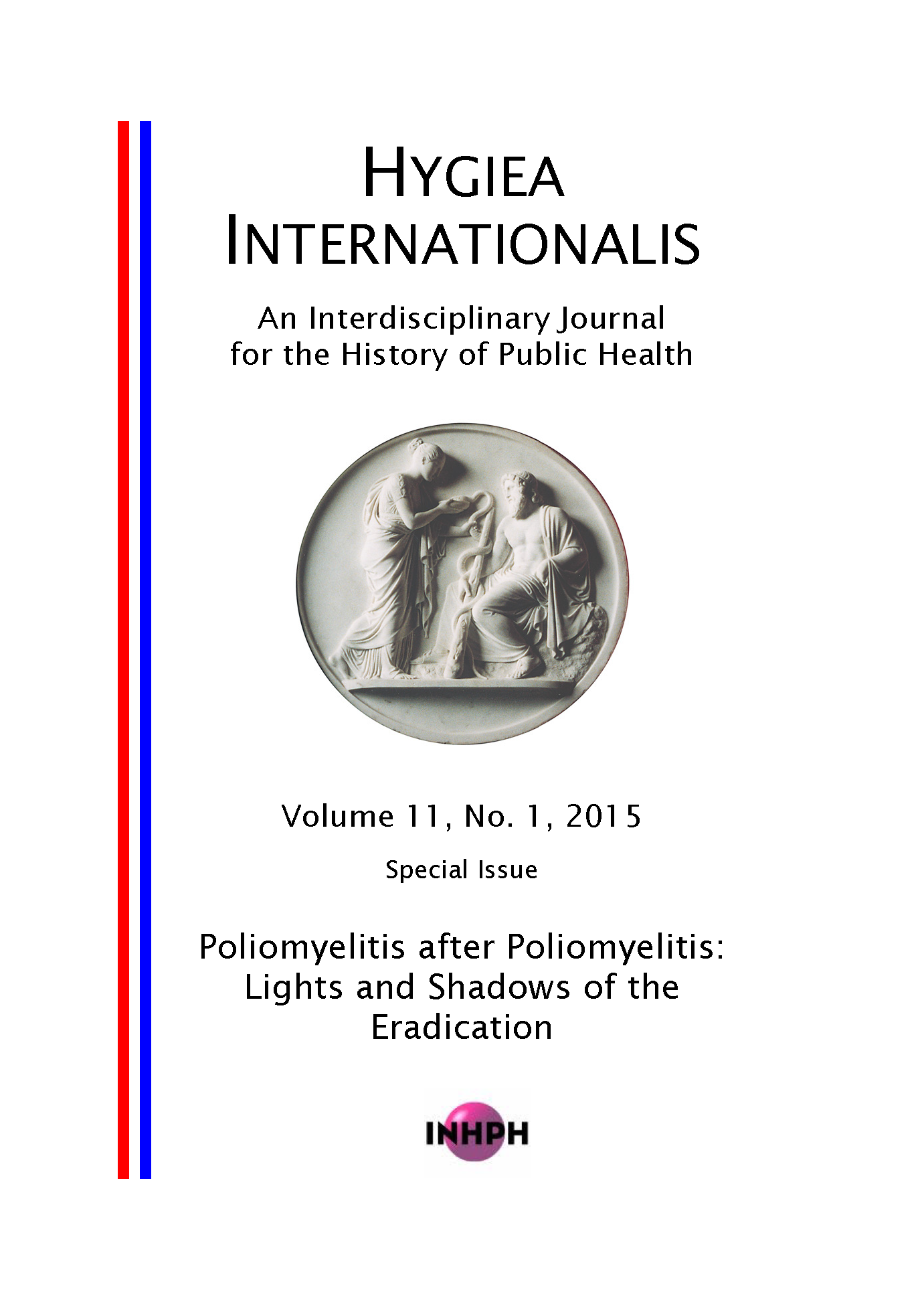The Eradication of Poliomyelitis in Spain
Projects, Obstacles, Achievements, Realities
DOI:
https://doi.org/10.3384/hygiea.1403-8668.1511171Keywords:
Poliomyelitis, eradication, World Health Organization, Spain, Twentieth centuryAbstract
At the end of the nineteenth century, poliomyelitis emerged as an epidemic disease and as a serious public health problem in the World. The historical reconstruction of the eradication program of infectious diseases within the context of the history of international public health and, in particular, the history of poliomyelitis in the European Region, is interesting as an example of cooperation among countries, in research, in policies and in collective efforts in a problem with such important scientific, professional and social repercussions.
This paper provides a historical approach to the complex process undertaken in Spain to achieve the official WHO certificate of polio eradication in 2002. It analyses the set of projects designed, the obstacles encountered in their practical implementation and the final outcomes. Our main international sources are the official WHO publications on the subject. In addition we have used printed sources, reports and other unpublished documents from the archives of the Carlos III Institute of Health as well as the Spanish Weekly Epidemiological Bulletin and a selection of daily newspapers that allowed us to analyse how an ambitious global health initiative was implemented at a local level.
Downloads
Published
How to Cite
Issue
Section
License
Copyright (c) 2015 the Author(s)

This work is licensed under a Creative Commons Attribution-NonCommercial 4.0 International License.






